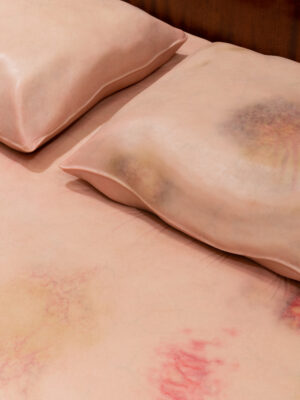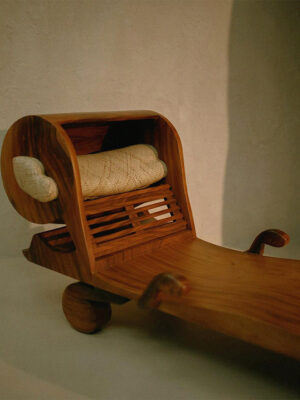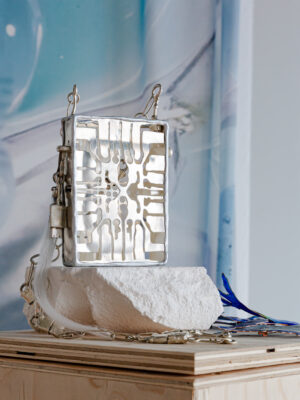Current Obsession: Your work engages with multitude of themes such as archetypal imagery, historical references, humor, and enduring topics like grief, life, and memory. What drives you to explore these subjects, and how do you view their relevance in a world that increasingly prioritises immediacy and change?
Maayan Sophia Weisstub: I am a multidisciplinary artist, creating in a wide variety of mediums. I believe that the diversity of mediums that characterises my work parallels the diversity of subjects I express through my art. I am exposed to and influenced by the reality around me, as well as by the dialogue between the inner world (on both its personal and collective levels) and the external world. I have chosen not to limit myself but to allow the subjects that move me, occupy me, excite me, and inspire me to emerge. This is a listening to the inner richness, an attentiveness to the external reality, and a connection between the two.
The world has been in a process of change and evolution since time immemorial, and being at the center of such change requires us to adapt and adjust. The dangers of immediacy, processes involving oversimplification, and partial or false information (disinformation) are deeply concerning. The encouragement of extremism is also problematic. Nevertheless, new opportunities have emerged, and dialogue has expanded, enabling art to connect with diverse, new, and intriguing audiences. While I recognise that the pressures of immediacy and the demand for instant gratification influence art, I firmly believe that now, more than ever, it is crucial to embrace depth, patience, and the value of gradual, deliberate processes.
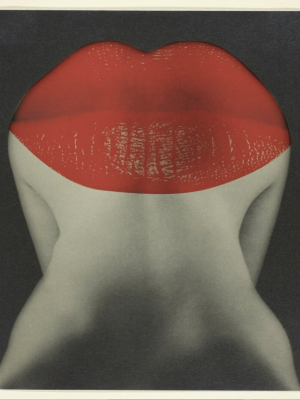
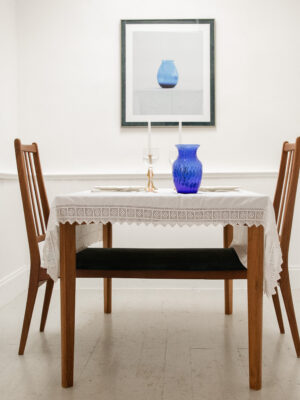
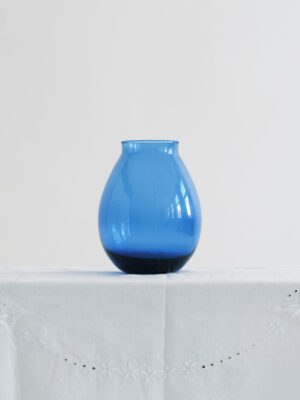
CO: How do you view human attachment to materiality? And what is your personal relationship with the objects around you?
MSW: I find the relationship between humans and objects deeply fascinating. Our interaction with and attachment to objects is both unique and meaningful. From a childhood blanket to a favourite coffee cup, these items accompany us through life, existing alongside us as quiet witnesses to our journeys. As a sentimental person, I easily form connections with the objects around me, particularly when they hold a link to someone meaningful in my life—whether through a gift, a memory, or an experience. In a drawer at my childhood home, I still keep birthday cards made for me by kindergarten friends and love letters from elementary school.
Objects have the remarkable ability to hold memories and emotional significance, often transcending their physical form. There’s a sense of animation in this connection, a life-like quality that has been part of human experience for thousands of years.
CO: In Let There Be Light and Mnḗmē, your sculptures appear almost surreal, coming alive through the act of breathing. Although the meaning of each work differs, could you elaborate on these pieces and explain what inspired you to give them this particular form of life?
MSW: Mnḗmē (2021) was my graduation project from the RCA and reflects my enduring fascination with the ‘life’ of inanimate objects. A decade ago, I created animations of breathing objects—stones, pillows, and other items—exploring the question of what makes something alive and identifying the most fundamental element that symbolises life.
During my master’s studies, I delved deeper into themes of breathing, anthropomorphism, and our relationships with everyday objects. This research gave me the foundation to further develop an idea that initially emerged intuitively. At its core, Mnḗmē is about loss and memory. My father passed away about ten years ago, and creating this piece became a way for me to process and navigate that experience. The installation features a table, a chair, a glass of milk, and a book from my father’s library titled Man and Time. I sought to breathe life into this scene—drawn directly from my father’s daily life—and, in doing so, honour the memories, emotions, and experiences tied to him.
By giving breath to the book that was read, the glass of milk that was drunk, the chair that was sat on, and the table that was worked upon, these objects transcend their functional roles. They become monuments to memory, imbued with life that lingers beyond the person who once used them.
Let There Be Light explores the profound dualities of existence: life and death, light and darkness, the material and the spiritual, and more.
In this work, the act of breathing represents both beginnings and endings—the first breath we take as we emerge from the womb and the last one before we pass away. The bulb’s body ‘breathes,’ expanding and contracting like a human belly. The light itself also breathes, dimming with each exhale and growing brighter with each inhale, embodying the rhythm of life and its inevitable cycles.
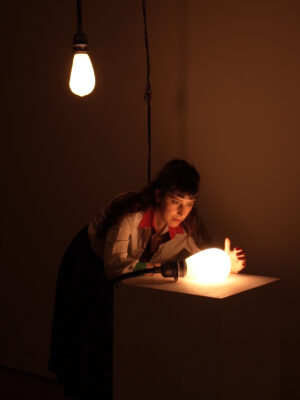
CO: Your piece The Bed explores themes of vulnerability, hidden trauma, and human violence. What challenges do you encounter in addressing such deeply personal and often unspoken realities through your art? How does this vulnerability influence both the creation and reception of your work?
MSW: The Bed is a work I created to address the dark realities that occur behind closed doors—often hidden from view. I made this piece during the lockdown in 2022, a time when reports of domestic violence surged. I wanted to shed light on this issue, one that, in some form or another, many people experience at some point in their lives, whether it’s physical or psychological violence within the home.
The challenge in creating a work on such a sensitive topic was to approach it thoughtfully and with care. I aimed to craft a sculpture that could be interpreted on multiple levels: as a metaphor for psychological abuse or as a direct representation of severe physical violence. It was important to me that the bruises and scratches on the bed were shown at varying stages of healing—some almost faded, yet others leaving scars. These scars represent the trauma that, in one way or another, stays with us for the rest of our lives.
The Bed was exhibited at the Museum of the Home at the end of 2022 and received deeply moving and powerful feedback from visitors and art professionals alike. Even today, I occasionally receive private messages from people who were profoundly impacted by the piece. Some even share their own experiences openly, which is incredibly meaningful to me.
The challenge in creating a work on such a sensitive topic was to approach it thoughtfully and with care.
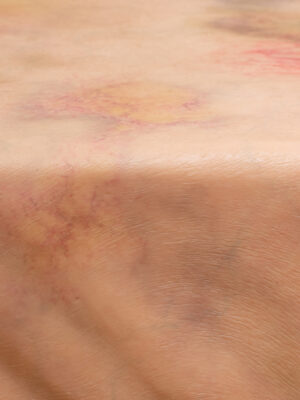
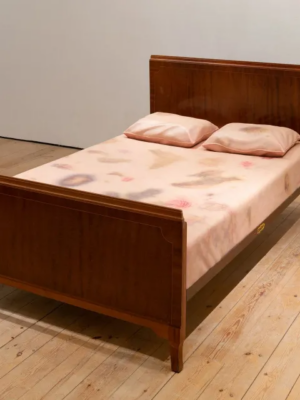
CO: Are there any societal norms or boundaries you’ve yet to confront in your work, but feel compelled to?
MSW: Topics like ‘otherness’ are interesting and thought-provoking, especially in the context of today’s society. It could be fascinating to explore the internal struggle between personal and social identity, how the concepts of foreignness, otherness, and belonging are challenged.
CO: Could you share more about any current or upcoming projects you are working on?
MSW: Recently, I finished The Weeping Tap, a sculpture that started as a video I uploaded to Instagram (of my eyes glued to the handles of the water taps in my bathroom sink). The tap drips, and the eyes appear to be crying. The sculpture is actually the realisation of that video, and I am really happy with the result and hope to exhibit it soon. Additionally, I recently joined a new art app called Gertrude, where you can find works of mine for sale. I also have other projects I’m working on, but it’s still too early to talk about them.
Do you have a new collection or a new body of work that’s simply dazzling? We want to hear from you! And remember–we welcome submissions throughout the whole year!
Every submission is a potential gem, and our team takes great care in handpicking projects that resonate with the contemporary scene. To submit your work, just email high-resolution images (5-10 pcs), image credentials, social media tag, work description (max 250 words), and artist bio (max 250 words) to veronika@current-obsession.com.
Website: Maayan Sophia Weisstub
Instagram: weisstub
All images are the courtesy of the artist.
